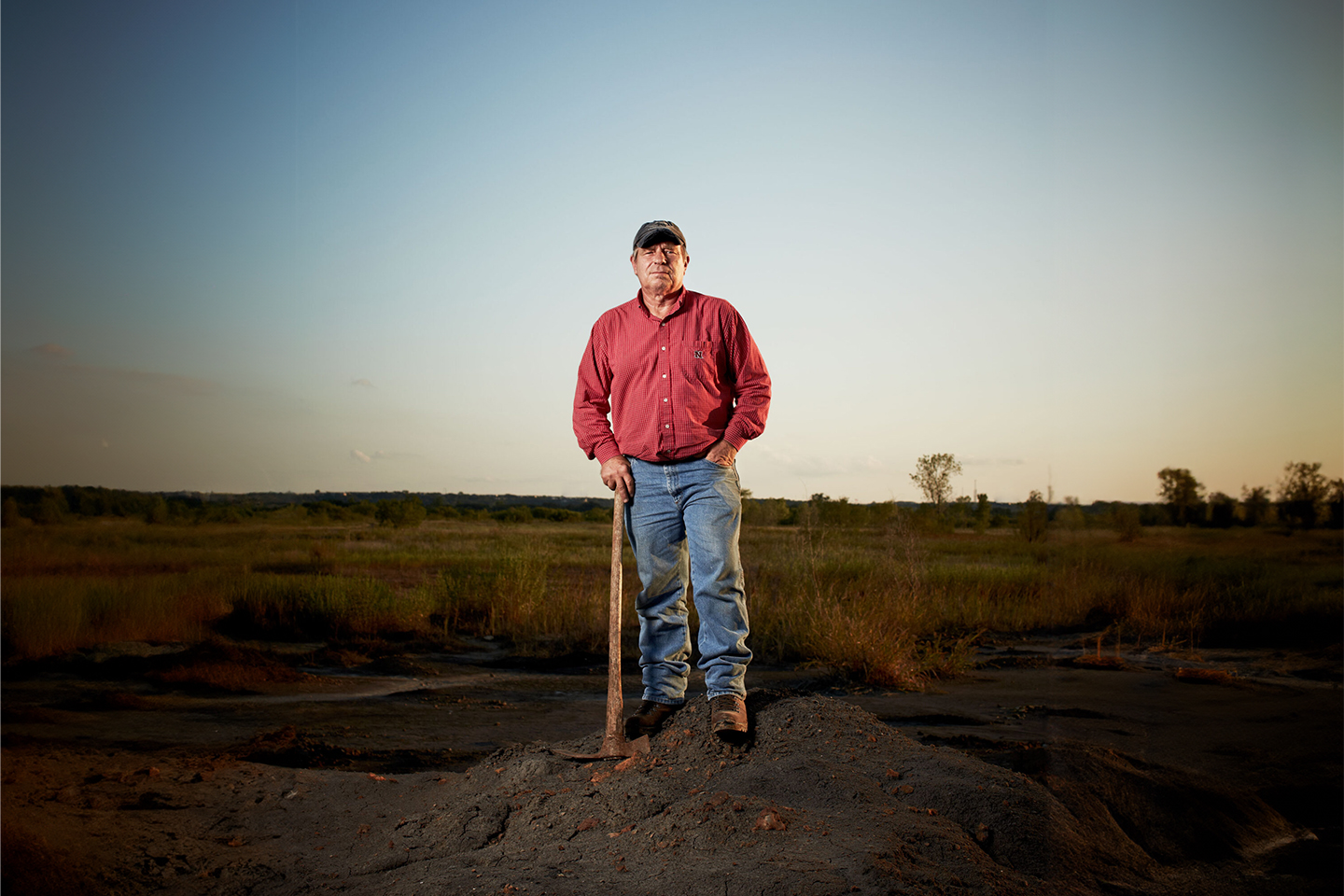Dinosaur Hunters
D Magazine, November 21, 2013
by Farraz Khan

A ragtag band of amateur paleontologists has been digging up 95-million-year-old fossils, under the watchful eye of a man trying to bring order to a lawless land.
Art Sahlstein felt the bullets whip past his ears before he heard the crack of the high-power rifles. It was a moonless November night. He was alone, unarmed, and hundreds of yards from his only hope: a black curtain of trees.
He swung his Yamaha Grizzly around, catching a final glimpse of the infidels—a pack of meth-heads—stamping out the fire and jumping aboard growling four-wheelers.
The Grizzly roared over the dips and knolls of the yawning valley, predators on its tail. More bullets. In a bolt of clarity, Sahlstein saw that his luck would break: sooner or later, a bullet would find him. So he clicked off the lights, relying on instinct to guide the way.
The bullets vanished. Sahlstein met his boundary of woods and plunged into the blackness. He killed the engine and dove to the ground. The Grizzly ticked, Sahlstein sighed. He would wait for an hour, but he knew he was safe.
“Here’s another one!”
Sahlstein’s sole shortcoming as a storyteller is that he gives not a moment of dramatic pause before kick-starting another tale. He’s like a shopkeeper who can’t resist showing you another item. It’s a mark of the same incorrigible enthusiasm that makes him so magnetic to begin with.
We are on his porch. Sahlstein holds court from a wheelchair, but he isn’t disabled—nowhere near. It’s a precarious seat choice for one given to sudden fits of animation.
He often reaches for a 64-ounce guzzler of iced tea, less often for a pack of Carnivals. A red Cornhuskers button-down hugs his paunch, and a worn cap is as snug above. His face is weathered, his hands expressive.
Sahlstein is the caretaker of a 2,400-acre tract of undeveloped land on the southern end of Euless. This is the site of Huffines Communities’ planned Viridian development. It is two blocks from Sahlstein’s house.
On the patch of land sits an unassuming hillside, spanning 100 yards, that has given Sahlstein, and a ragtag band of amateur paleontologists, a peek into the Earth as it was 95 million years ago. This is the Arlington Archosaur Site, a 5-year-old excavation of a vibrant ecosystem—including dinosaurs and primitive crocodiles and turtles—from a time when Dallas lay on the marshy coast of a great sea that split North America in two.
The archosaur site is a rare thing in paleontology. Typically, fossil finds occur in remote locations, permitting field seasons (i.e., digging time) of only six to eight weeks out of the year. Even more typically, the job of fossil excavation is reserved for trained specialists.
Owing to geographic luck—the excavation sits within a major metropolitan area, making it easily accessible—and the efforts of an enterprising director named Derek Main, the Archosaur Site has turned convention on its head: here, field seasons are eight months long, and the workforce is dominated by amateur fossil enthusiasts. Over its lifetime, the Archosaur Site has seen more than 4,000 amateur diggers.
It was Main—at the time, a Ph.D. candidate in geology at the University of Texas at Arlington—who opened the dig to anyone with a curiosity about paleontology, seeking out volunteers on bulletin boards and outreach events. Soon, he had assembled a core group of 30-some amateur paleontologists.
Sahlstein was one of those amateurs. His paying job is as a network administrator. But from any 10-minute conversation with Sahlstein, it’s clear the job he loves most is that of The Caretaker (a title that deserves capitalization to match Sahlstein’s solemn inflection).
Sahlstein was The Caretaker before there was an Archosaur Site. Excavation started in 2008 after the new landowner—Huffines—granted permission. But Sahlstein knew about the fossils as early as 2003, when he began keeping watch. With Huffines’ signature five years later, his dream role was formalized.
The Caretaker makes daily, sometimes thrice-daily, rounds of the land. In his decade-long tenure, he’s known it as a Wild West—a playground where city-dwellers come to scratch the itch for (often illicit) adventure. There are off-roaders, bonfire-setting drunks, and marijuana-toking teens. Some come to spend hundreds, thousands of rounds of ammo, others to liaise with girls from the topless clubs nearby. (More than once, Sahlstein, a children’s minister at South Euless Baptist Church, has led Sunday schoolchildren in prayer walks through the valley, only to stumble upon “naked fornicators.”)
“Infidels” is what Sahlstein calls them. They are the pests he’s clearing out—those who might jeopardize the integrity of the Archosaur Site. The infidels aren’t too fond of Sahlstein either: on off-roading blogs, annoyed riders deride “99-cent Sneaker Man,” so dubbed for his gray Velcro footwear from Walmart. More sinister infidels have left him a gaping dead catfish on the property gate.
When things get dicey—as when the meth-heads intermittently crop up—Sahlstein calls for backup. Thanks to his self-appointed position, he’s on a first-name basis with 911 dispatchers and Arlington police officers. A policeman once showed him an electronic log of his calls; after page seven, they stopped clicking “Next.” Sahlstein gets a kick out of telling these stories: the time when he accompanied a SWAT team in an ambush on assault-rifle-shooting trespassers; or the time when law enforcement “in sunglasses and blacked-out Suburbans” enlisted him to hunt a kidnapper hiding on the land.
The job didn’t exist before Sahlstein invented it. And though he insists that diggers bestowed the portentous title upon him, he uses it most readily. There’s a gravity to it that he relishes. Being The Caretaker transforms Sahlstein into a do-gooding protagonist, who by force of will, brings order to a lawless land. “The Wild West is being tamed,” he says.
But being The Caretaker is more than a boyish fantasy played out. As Sahlstein sees it, his is a sacred duty, for this is a Holy Land.
God spoke to Sahlstein on a winter morning in 2002. For months, Sahlstein had been waking at 4 am for prayer walks through the valley near his house. Every morning, he would walk a new stretch of the land, watch the sun rise, then return home. It gave him time to find peace at the head of another day.
On cue, Sahlstein pauses, fiddles with his pack of Carnivals. We are no longer on his porch; after a two-minute truck-ride, we are standing in the valley, before the Archosaur Site. Sahlstein extracts a cigarette. A puff, and the story resumes.
On the winter morning, he traveled the valley as before, but was struck by twinkling lights in the distance. “Like glittering diamonds on the horizon,” he says. He rushed over and arrived at a hillside packed with translucent gypsum crystals. Like hundreds of tiny mirrors, the bits of gypsum reflected the morning light, dazzling Sahlstein and signaling something preternatural.
“That was the place God wanted me to go stand,” he says.
Every morning afterward, Sahlstein, like a pilgrim, came to the same spot, waiting for a miracle. It came in January 2003, when his 7-year-old daughter, Olivia, a rare companion on his sunrise walk, took a seat on the hill and felt the mineralized poke of a dinosaur vertebra. For the first time in all his journeys to the hill, he looked down and saw the fossilized treasure beneath his feet.
The hundreds of fossils excavated from the hillside to date belong to the middle Cretaceous period, an under-sampled time in Earth’s history.
But there is another, more recent history that the hillside documents—one to which director Main referred in a TED talk as “ordinary people doing extraordinary things.” In June 2009, 14-year-old Austin Motheral unearthed a 24-foot crocodile using a front-loader. The new species will be named after him—Deltasuchus motherali. Margie and Pat Kline, a retired couple with a penchant for flying single-engine Bonanzas, reassembled a shattered turtle-shell fossil after only a combined year’s worth of fossil-prep experience. The Klines presented their novel techniques at national paleontological conventions.
These are stories Sahlstein has witnessed up close, inhabited by characters he now calls family. By now, he’s well versed in the science: he speaks the argot of paleontology, understands the flux of life through geologic history, and can eloquently explicate the importance of the Archosaur Site. But he is a man of the earth. The digging—and the finding—is what sustains him. A discovered fossil invests the whole project with a purpose. It represents a validation of his exertions, an affirmation that there is a point beneath the chaotic mess of surface nothingness. All you need to do is put your head down and look—something he learned on a gypsum hillside 10 years ago.
Nancy Grippe rolls up. Hitherto, Sahlstein’s girlfriend has been a buzz in his cellphone receiver. Her arrival spurs Sahlstein to grab my arm: another story. He used a killer pickup line on Grippe: “Wanna come over and see my bones?” Soon after, he brought her to the Archosaur Site. On her first dig, a wall of dirt collapsed over her, burying her to the waist. He dug her out, and they’ve been dating ever since.
When he drives into the valley every night, Sahlstein is safeguarding the hillside and the promise of more fossils. But he’s also protecting these stories, his new family, and the very purpose of his life for the past decade. Standing at the hillside, he says, “I’ve gotten a heck of a lot more from this valley than just bones.” For Sahlstein, the Archosaur Site—his Holy Land—has made good on God’s promise: there is meaning to be found, if you dig for it. It’s all a story, and there is a point.
The story of the Archosaur Site, though, is coming to an end. In June, Derek Main, the site’s visionary director, died suddenly at the age of 41. The excavated fossils, previously housed at UTA, have been moved to the Perot Museum of Nature and Science, and the museum is in talks to take over the excavation. Huffines’ Viridian development is also underway. In the coming years, brick and steel will tame Sahlstein’s Wild West. No one knows what will happen to the Archosaur Site.
Sahlstein is at peace with it. After 10 years of digging and finding, he has dug and found enough. Yet after saying goodbye, I turn back and see Sahlstein walking along the hillside, his head down. He is still looking.

